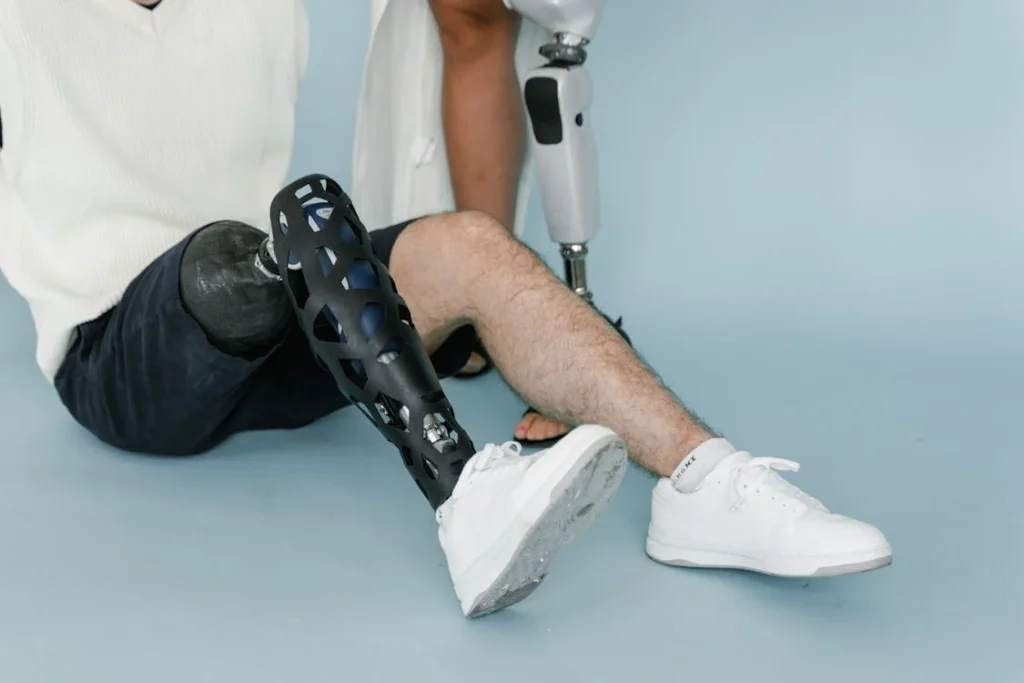When someone begins using a prosthetic limb, they often focus on how it looks or whether it feels comfortable. But there’s something even more important happening beneath the surface—alignment.
Prosthetic alignment is the careful positioning of the artificial limb in relation to the rest of the body. If it’s off by even a small amount, it can affect how a person walks, stands, and moves through the day. Over time, poor alignment doesn’t just feel awkward—it can lead to back pain, joint problems, and even long-term damage to the body.
The way your foot strikes the ground, how your weight shifts, the tilt of your hips, the curve of your spine—everything changes when a prosthesis is out of line.

Understanding Prosthetic Alignment: The Foundation of Movement
What Does Alignment Really Mean?
Prosthetic alignment isn’t just about putting on a limb and making sure it stays in place. It’s about how every part of the artificial limb lines up with the body—front to back, side to side, and top to bottom.
It includes the angle of the socket, the height of the prosthesis, the position of the joints, and how the limb responds to weight and motion.
When alignment is correct, the body moves smoothly. Steps feel even. Balance comes easily. The user doesn’t have to think too much—they just move.
But when alignment is off, even by a little, the body begins to compensate. That means it starts to shift in ways that can cause problems over time.
The body is good at adapting, but not without a cost. Overcompensation can lead to joint strain, muscle fatigue, and pain in places far from where the limb is actually worn.
The Link Between Alignment and Gait
Gait is the pattern of how you walk. It includes how your foot lands, how your hips move, and how your arms swing. A well-aligned prosthesis supports a natural gait.
This means both sides of the body move in rhythm. The hips stay level. The steps are equal in length and force. The feet land heel-first and push off with the toe.
But if the prosthetic foot is angled too far forward or back, or the socket is tilted incorrectly, this rhythm breaks. One side might swing wider. The other might step shorter.
Over time, this uneven motion can cause one hip to rise higher than the other. The spine may curve slightly. Shoulders might start to round or slump.
These changes might not be obvious right away. But over weeks or months, they build up. That’s why gait training, paired with alignment checks, is essential in the early stages of prosthetic use.
How Posture Responds to Poor Alignment
Posture is how you hold your body while sitting, standing, or walking. It’s shaped by balance and muscle tone. A well-aligned prosthesis supports good posture automatically. It allows the user to stand upright, with shoulders relaxed and hips centered.
But when the alignment is off, posture begins to shift. Some users lean back to keep balance. Others shift their torso forward. The body tries to protect itself from discomfort, often without the person realizing it.
In children, this can affect growth. In adults, it can lead to early fatigue, back strain, and discomfort while sitting or standing for long periods.
When the spine or pelvis isn’t in its natural position, the muscles around them work harder than they should. Over time, that leads to tightness, soreness, and reduced mobility.
Proper alignment doesn’t just affect how a person walks—it affects how they sit at work, how they sleep, and how they carry themselves in everyday life.
The Long-Term Effects on Joint Health
The joints in our body are built to work in harmony. Hips, knees, ankles, shoulders, and even wrists all depend on alignment to function properly. When a prosthesis is misaligned, joints begin to wear unevenly.
One knee may bend more than the other. One hip may twist slightly inward. Even the joints on the unaffected limb may start to feel the strain.
This extra stress can lead to early joint pain or conditions like arthritis. It may also cause muscle imbalances, where one group of muscles becomes tight while another becomes weak.
Over time, walking becomes harder. Movements become slower. The person may start to avoid activities they used to enjoy—just to avoid the discomfort.
The right alignment helps prevent all of this. It protects joints by keeping the body’s weight centered and evenly distributed. It reduces friction and allows every part of the body to move the way it’s supposed to.
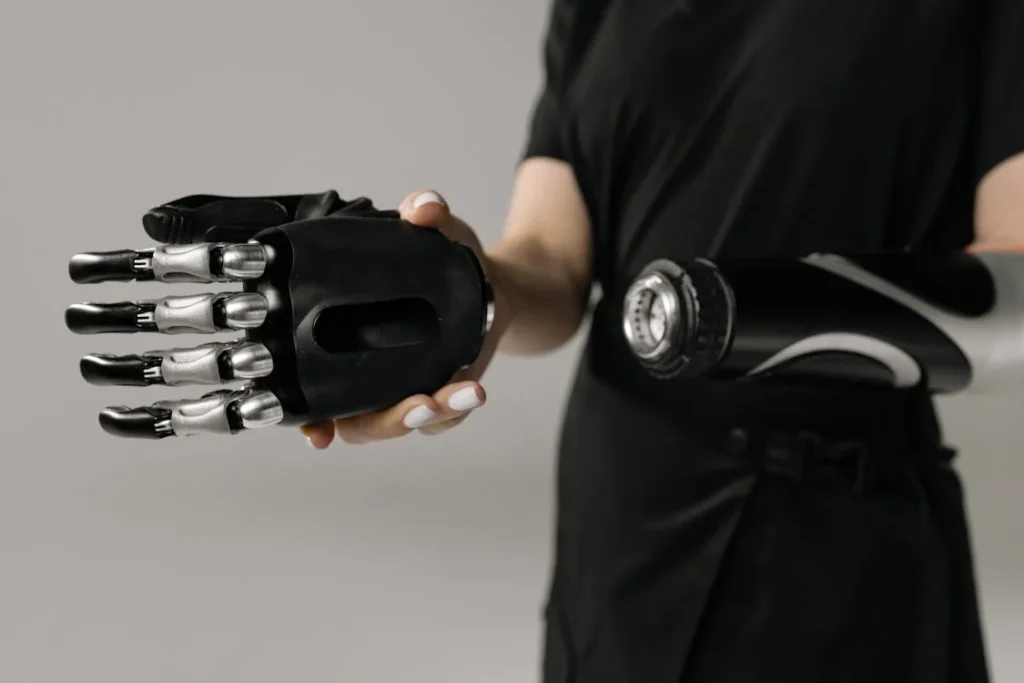
The Process of Achieving Proper Prosthetic Alignment
It Begins With the Residual Limb
Proper alignment starts with understanding the shape, length, and muscle tone of the residual limb. No two limbs are the same, and alignment is not about finding a “standard” position—it’s about finding what works for that specific person.
The socket, which is the part of the prosthesis that attaches to the residual limb, plays a key role here. If the socket doesn’t fit well, no amount of fine-tuning elsewhere will help.
A poor socket fit can tilt the body, put pressure on sensitive areas, or cause the user to limp. So the first alignment decision is making sure the socket connects to the limb in a stable, balanced way.
This involves a lot of careful testing. The prosthetist may adjust angles, padding, or even create a test socket to see how the body responds.
During these early fittings, they observe everything—from the way the person walks to how they shift when sitting. Every detail gives insight into what needs to be changed.
Dynamic Versus Static Alignment
There are two types of alignment: static and dynamic. Static alignment is checked when the person is standing still.
It looks at how the body stacks up—whether the spine is straight, the shoulders are level, and the hips are even. Static alignment is important for comfort and balance.
But dynamic alignment is where the real fine-tuning happens. This is how the body moves while walking. A prosthesis might look perfect when still but cause problems once the user starts to walk.
That’s why prosthetists observe walking patterns, stride lengths, and even how the arms swing. They listen to the sound of the steps, watch how the heel strikes the ground, and feel for pressure points inside the socket.
These tiny details show where adjustments are needed. Sometimes it’s the angle of the knee. Other times it’s the way the foot is angled or how high the toe is off the ground.
These are not big changes, but they make a huge difference in how the body responds.
It’s Not a One-Time Job
One of the biggest misunderstandings about prosthetic alignment is that it’s a one-time fix. In truth, alignment should be reviewed regularly—especially in the early months after a prosthesis is first worn.
The body changes. Muscles strengthen or weaken. A user may gain or lose weight. Children grow, and their movement patterns shift as they hit new milestones.
Even adults can start walking differently after gaining more confidence with their limb.
These changes mean the alignment that worked a few months ago might not work today. That’s why follow-up appointments and gait checkups are a key part of long-term care.
These are not just technical checks—they are essential for keeping pain away, maintaining good posture, and preserving joint health over time.
Proper alignment evolves with the user. It listens to the body’s signals and adjusts accordingly.
The Role of the Prosthetist and Therapist
Alignment is a team effort. The prosthetist works on the technical side—adjusting joints, fitting sockets, balancing angles. The physical therapist focuses on training the body to move well with the prosthesis.
They teach posture, guide walking, and suggest stretches and exercises that support joint health.
Both work together to read the feedback from the user’s body. If a knee feels stiff or the lower back begins to ache, that’s a clue.
If a user is avoiding their prosthesis altogether, that’s another red flag. These signs aren’t ignored—they’re studied.
Good alignment is not about perfection. It’s about tuning the prosthesis and the body until they work in harmony. That kind of harmony is what lets people move freely, live actively, and feel good at the end of the day.
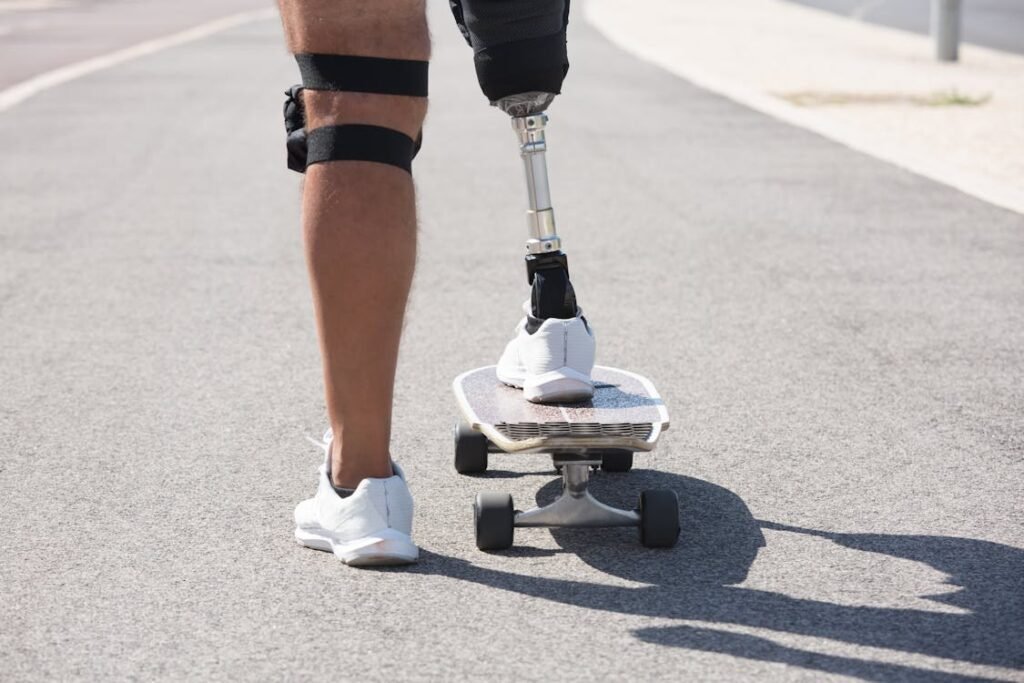
How Alignment Shapes Real-Life Mobility
From the Clinic to the Street
Once the prosthesis feels good in a clinic setting, the real test begins—life outside. Walking on flat indoor floors is one thing. Navigating uneven roads, crowded spaces, or stairs is another.
The body responds differently in every setting, and alignment must support those changes.
A person might walk perfectly on smooth ground but struggle with curbs or hills. That’s not always a strength issue—it’s often alignment.
If the toe points slightly inward or the knee joint isn’t set to the right resistance, walking uphill becomes hard work. If the foot doesn’t roll smoothly with each step, it can throw off balance going down slopes.
That’s why real-world testing is critical. Prosthetists sometimes ask users to walk on different surfaces, climb stairs, or practice standing for long periods.
These activities help fine-tune the alignment to reflect the way the user actually lives.
Comfort Over Long Hours
One of the most telling signs of proper alignment is how the body feels at the end of the day. If someone wears their prosthesis for eight to ten hours and feels strong, stable, and free of pain, alignment is likely spot-on.
But if they experience soreness, swelling, or fatigue, something needs adjusting.
Prosthetic users often develop small habits to avoid discomfort. They may shift their weight more on one side, take breaks more often, or stop certain movements altogether.
These changes aren’t always obvious, but over time, they reduce quality of life. They also create extra strain on muscles and joints.
Good alignment reduces the need for these coping habits. It allows the user to go through their day without constantly thinking about their limb.
And that kind of comfort—when a person can forget they’re even wearing a prosthesis—is a true sign of success.
Helping People Stay Active
Physical activity is important for everyone, but especially for prosthetic users. Regular movement keeps muscles strong, joints flexible, and circulation healthy. But for people with poor alignment, staying active can feel like an uphill battle.
Running, dancing, cycling, or even brisk walking becomes harder if the prosthesis isn’t moving with the body.
Poor alignment throws off rhythm, creates pressure spots, and leads to joint pain. Some people avoid movement altogether just to prevent discomfort.
On the flip side, a well-aligned prosthesis invites motion. It makes movement feel smooth. It boosts confidence. It gives people the freedom to join sports, go for long walks, or simply enjoy playtime with their kids.
Prosthetic alignment isn’t just about walking—it’s about giving people their full range of motion back, in a way that feels safe and sustainable.
Supporting Psychological Confidence
There’s also an emotional side to alignment. When a prosthesis feels right, users walk taller. They appear more confident. Their body language opens up. That’s not just physical—it’s psychological.
Poor alignment often shows up in posture: slouched shoulders, bent backs, uneven steps. These signals affect how others see the user, and more importantly, how they see themselves.
Over time, poor alignment can impact self-esteem and increase feelings of frustration or isolation.
But when the prosthesis moves in harmony with the body, it brings a sense of control. Users trust their movement.
They look forward to going outside. They feel proud—not just of the limb, but of the strength it takes to move with ease.
That confidence can transform a life just as much as the limb itself.
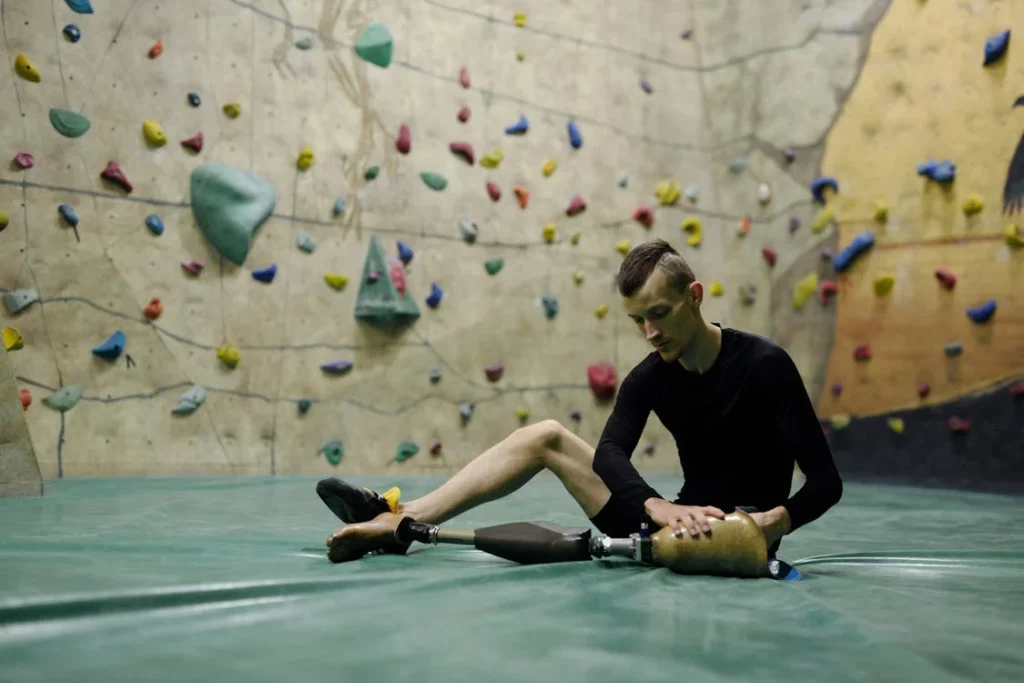
Long-Term Effects of Alignment on Health and Mobility
The Wear-and-Tear You Don’t See Right Away
Misalignment doesn’t always hurt right away. In fact, some users don’t even realize something is wrong until months—or even years—after they start using their prosthesis.
The pain might come slowly: a stiff back in the morning, an ache in the knee after walking, or tension in the shoulders at the end of the week.
These are signs of gradual wear-and-tear.
Even slight alignment issues can lead to unnatural pressure on joints and bones. For example, if a prosthetic leg causes the foot to land too far outward, it creates a twist in the knee with every step.
That twist adds stress that builds over time, weakening the joint and increasing the risk of conditions like osteoarthritis or tendon inflammation.
By the time the pain shows up, the damage may already be underway. That’s why regular alignment checks—even when things feel fine—are essential to protect long-term joint health.
Protecting the Sound Side of the Body
Another important aspect of long-term alignment is how it affects the sound limb—the one without the prosthesis.
Many users, especially early on, tend to favor their natural limb. This may feel safer, but it puts more pressure on one side of the body.
When the prosthetic limb is well-aligned and feels stable, the body begins to trust it more. This encourages weight to be distributed more evenly.
But if the prosthetic side feels unreliable—too long, too short, or poorly balanced—the natural side ends up doing all the work.
That overuse can lead to hip, knee, or ankle pain, and may cause the unaffected side to break down faster.
Long-term health means protecting the whole body—not just the side with the prosthesis.
Helping the Body Age Better
Alignment plays a role not only in how people move today, but in how well they’ll move years from now.
A prosthetic limb that works in sync with the body helps keep muscles strong, joints smooth, and movement patterns efficient. It keeps people moving well into their older years.
This is especially important for younger users and children. If alignment isn’t corrected early, bad movement habits form and get harder to fix later.
They can lead to long-term issues with balance, coordination, or even scoliosis.
For adults, good alignment supports healthy aging. It prevents joint overload, keeps the back strong, and reduces the chance of falls or serious injuries in later years.
It helps people maintain independence longer, stay active, and enjoy life more fully as they grow older.
Planning for a Lifetime of Use
A prosthesis is not something you get once and forget. It’s a long-term companion. As the user’s body changes—due to age, weight, pregnancy, muscle loss, or increased activity—alignment must change too.
That’s why prosthetists often develop adjustment schedules. These include check-ups at regular intervals and after major life events.
They track changes in gait, pressure points, and user feedback to make sure the limb keeps up with the body’s needs.
This kind of long-term planning is what makes prosthetic care sustainable. It shifts the focus from “fixing problems” to preventing them.
And it allows users to move forward confidently, knowing they’re supported not just for today, but for years to come.
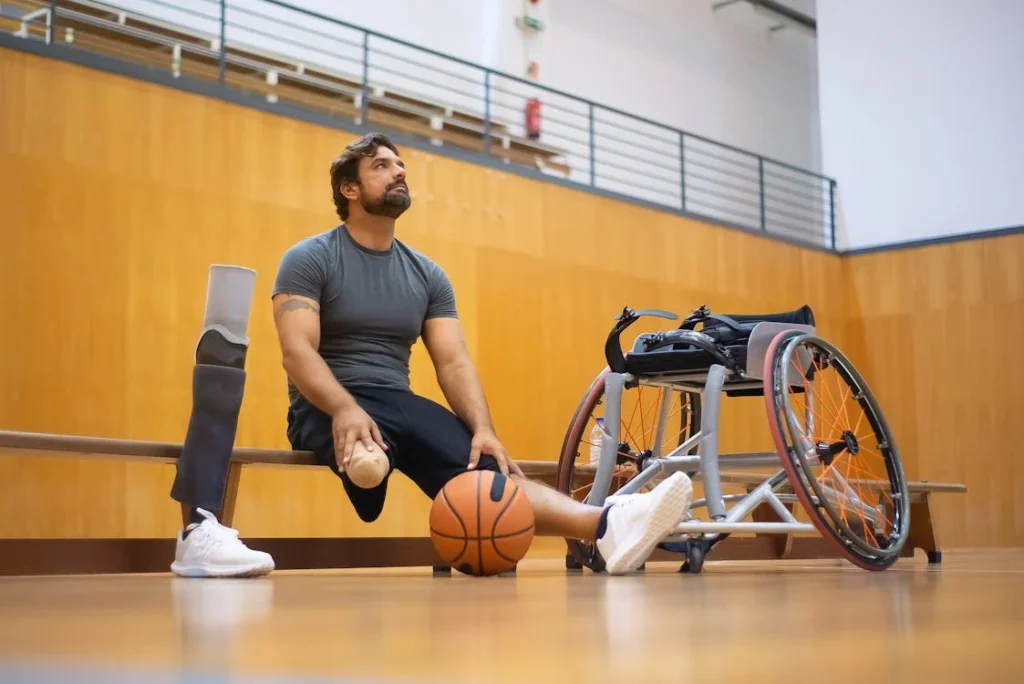
The Hidden Cost of Misalignment: Energy Use and Daily Fatigue
Movement Shouldn’t Be Exhausting
One of the most common complaints among prosthetic users—especially those who are new to their device—is how tiring walking can feel.
A few short trips around the house or one errand outside can leave them needing to rest. It’s not always about physical fitness. In many cases, it comes down to one core issue: alignment.
When a prosthetic limb is poorly aligned, the body has to work harder to move. Muscles overcompensate. Steps become uneven. The hips and spine shift. Instead of flowing naturally, every movement becomes effortful.
This burns more energy than it should—causing the user to tire out faster, even with basic activities like walking, climbing stairs, or standing still for too long.
Proper alignment corrects this. It allows the body to move efficiently. It spreads out work across all muscle groups, reducing overload. And that means a person can do more—with less effort—throughout the day.
The Impact on Daily Routines
Fatigue doesn’t just affect how someone feels physically. It influences how much they participate in life.
A poorly aligned prosthesis might be the reason someone skips a family outing, avoids social events, or doesn’t pursue a job opportunity. They’re not lazy—they’re managing their limited energy reserves.
When alignment is correct, this story changes. People get through the day without needing multiple breaks.
They stand longer, walk farther, and regain the energy to focus on hobbies, relationships, or career goals. Their prosthesis stops being a drain and becomes a support system.
That shift has real emotional value. It restores freedom, dignity, and the ability to live life on one’s own terms.
Fuel Efficiency for the Human Body
Think of alignment like tuning a car. If a car’s wheels are off balance or the tires are worn out, it burns more fuel. The engine has to work harder to go the same distance.
Your body works the same way. Misalignment forces you to use more energy just to complete basic movements.
But when everything lines up—the joint angles, the socket fit, the walking rhythm—your body becomes more efficient. You can move with less strain.
You take smoother steps. You recover faster. That efficiency isn’t just a physical benefit; it’s a major quality-of-life improvement.
It means users can go about their day without constantly planning when they’ll need to rest. They can enjoy longer walks, join in active play with children, or manage a full workday without pain or exhaustion.
Empowering Sustainable Mobility
In rural areas, where people often walk long distances, or in busy cities, where commuting involves lots of stairs and uneven ground, energy use becomes even more important.
Users need prostheses that don’t just function—they need ones that support endurance.
Prosthetic alignment tailored to real-world lifestyles helps make that possible. It supports users who walk to school, carry goods, or stand for long shifts at work.
It’s a silent partner, working behind the scenes to conserve energy and protect strength for what really matters.
Proper alignment, in this sense, is a tool for independence. It ensures the prosthetic helps the person live sustainably—not just physically, but emotionally and socially, too.
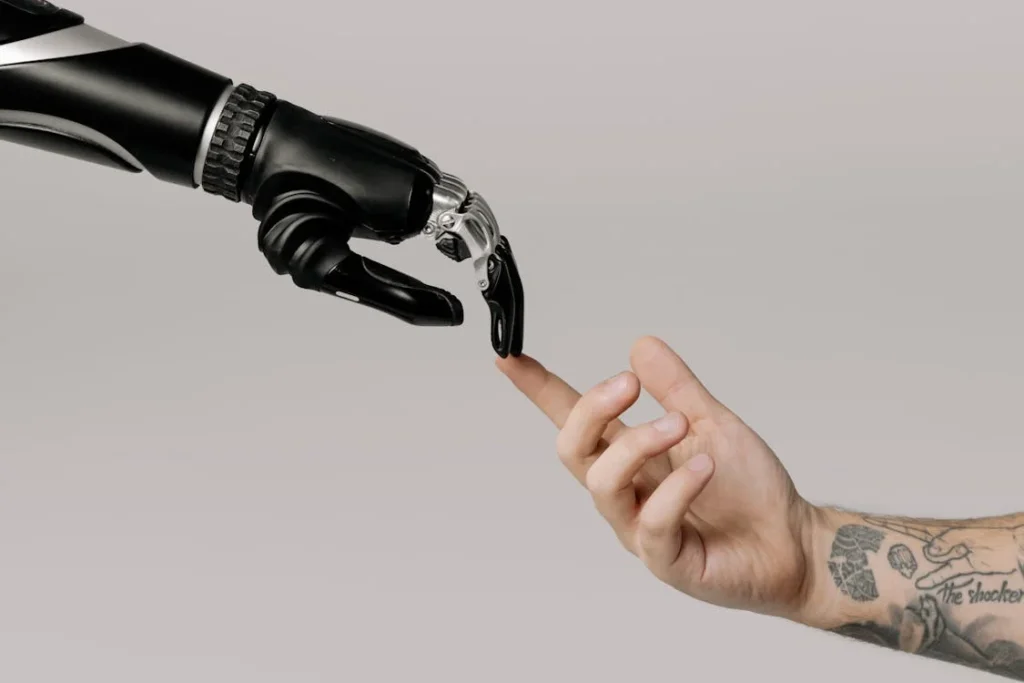
Listening to the Body: How Patient Feedback Shapes Better Alignment
The User Knows Best
Technology, biomechanics, and clinical tools can tell a lot. They can measure angles, detect pressure points, and analyze how someone walks. But there’s one thing they can’t do: feel what the user feels.
That’s why patient feedback is a vital part of the alignment process. A user’s personal experience—how the limb feels when sitting, walking, or moving—is full of insights that can’t be captured by machines.
The tiniest discomfort, the way the limb shifts when stepping off a curb, or the strain felt after standing for an hour—these details matter. They’re not “just feelings.” They’re clues.
Many of the most accurate adjustments come from conversations, not just calculations. The more openly a user shares their experience, the more precisely the prosthesis can be aligned.
Communication Builds Better Outcomes
The relationship between a prosthetic user and their care team should be built on trust and open dialogue. When users feel heard, they’re more likely to speak up about small changes in comfort or performance.
They’re more willing to return for follow-ups. And they’re more engaged in their own success.
This feedback loop creates continuous improvement. One appointment leads to better fit. The next leads to better movement. Over time, each small change builds a more natural, comfortable experience.
In fact, the best prosthetists often spend more time listening than adjusting. They ask how it feels at work. How it holds up during a long walk.
Whether the user avoids wearing it sometimes—and why. These answers are often more useful than numbers alone.
Every User Is Unique
No two bodies are the same. Two people with the same type of amputation may walk completely differently. They may have different routines, goals, or sensitivities. What works for one may feel wrong for another.
That’s why prosthetic alignment must be personalized. Templates and standard settings are just a starting point. True alignment is a collaboration. It’s an ongoing process shaped by the user’s real-world feedback.
Whether it’s a child learning to balance on two feet, a farmer walking on uneven ground, or a grandparent navigating stairs, alignment decisions should always be based on the individual.
Building Confidence Through Shared Control
When users are invited into the decision-making process, something powerful happens: they gain confidence—not just in their limb, but in themselves.
They stop feeling like patients and start feeling like partners. They speak up. They take control. They notice small changes earlier and seek help before pain builds up.
This shared control leads to faster solutions and stronger outcomes. It also reduces frustration, anxiety, and drop-off in prosthetic use—common challenges that can often be solved with simple alignment tweaks based on the user’s words.
Prosthetic alignment isn’t just a technical process. It’s a conversation. And the most important voice in that conversation is the person wearing the limb every day.
Conclusion
Prosthetic alignment is more than a technical detail—it’s the foundation of movement, comfort, and long-term health. When the limb is aligned properly, everything works better: gait becomes smoother, posture improves, energy lasts longer, and joints stay protected. But when alignment is off, even slightly, the effects can build up fast—causing discomfort, fatigue, and even injury.
It’s not just about walking well in a clinic. It’s about living well in the real world—on stairs, across busy streets, at work, and at home. Good alignment makes the prosthesis feel like a part of the body, not just something worn.
And the key to getting it right? Listening. To the body. To the user. To every step, strain, and shift.
At Robobionics, we believe that alignment is not a one-time fix, but a journey—personal, evolving, and deeply human. Because smart mobility begins with understanding how people move and what they need to move better.



